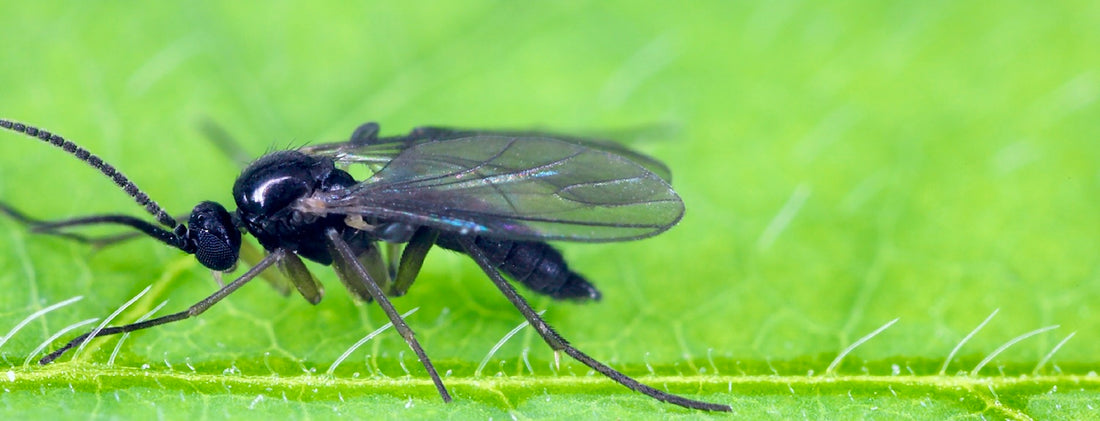Fungus gnats are small flies very similar to fruit flies that belong to part of the Mycetophilidae and Sciaridae families.
They feed on decaying organic matter, fungi and plant roots (especially damaged roots making plant much more prone to diseases).
Fungus gnats are particularly dangerous to plants as they can also carry diseases such as Pythium on their bodies and have the ability to transfer it from plant to plant.
The life span of a fungus gnat consists of about 3-4 weeks depending on the conditions of the environment. Fungus gnats love, damp moist (overwatered) substrates, as they breed extremely fast in these conditions (up to 300 eggs in an adult’s life) and benefit from high humidity, so the threat of an infestation in the vegetation phase is more likely than in flower given that the humidity is at the correct setting.
Fungus gnats have 4 stages of life:
- Egg
- Larvae
- Pupae
- Adult
The eggs will hatch after about 3-6 days, hatching little larvae (Translucent maggot looking things)
The larvae feed on the fine root hairs of the plant and will do significant damage to nutrient absorption (the plants ability to uptake nutrients) if feeding on a seedling/cutting or an unestablished plant meaning there will be an insufficient amount of nutrients available for healthy growth.
Fungus gnats are pretty easy to control if the infestation isn’t too bad, but if infestation is bad, your fruits/flowers will act as sticky traps, leaving tiny gnats stuck to your flowers, which can cause things like bud-rot, mould and foul odours. Not to mention an unusable crop.
A great product that takes care of fungus gnats and their entire life cycle is gnatnix!, click here to read more about the benefits of gnatnix!
If you have fungus gnats you can’t just leave it a day or two and then attempt to fix the problem, by that stage the number of larvae bred makes it very much an uphill battle to remove them.
Keep an eye out for a new product by Lost Labs; Triple R. Coming soon to A-Grade.
Remember that prevention is better than cure.




